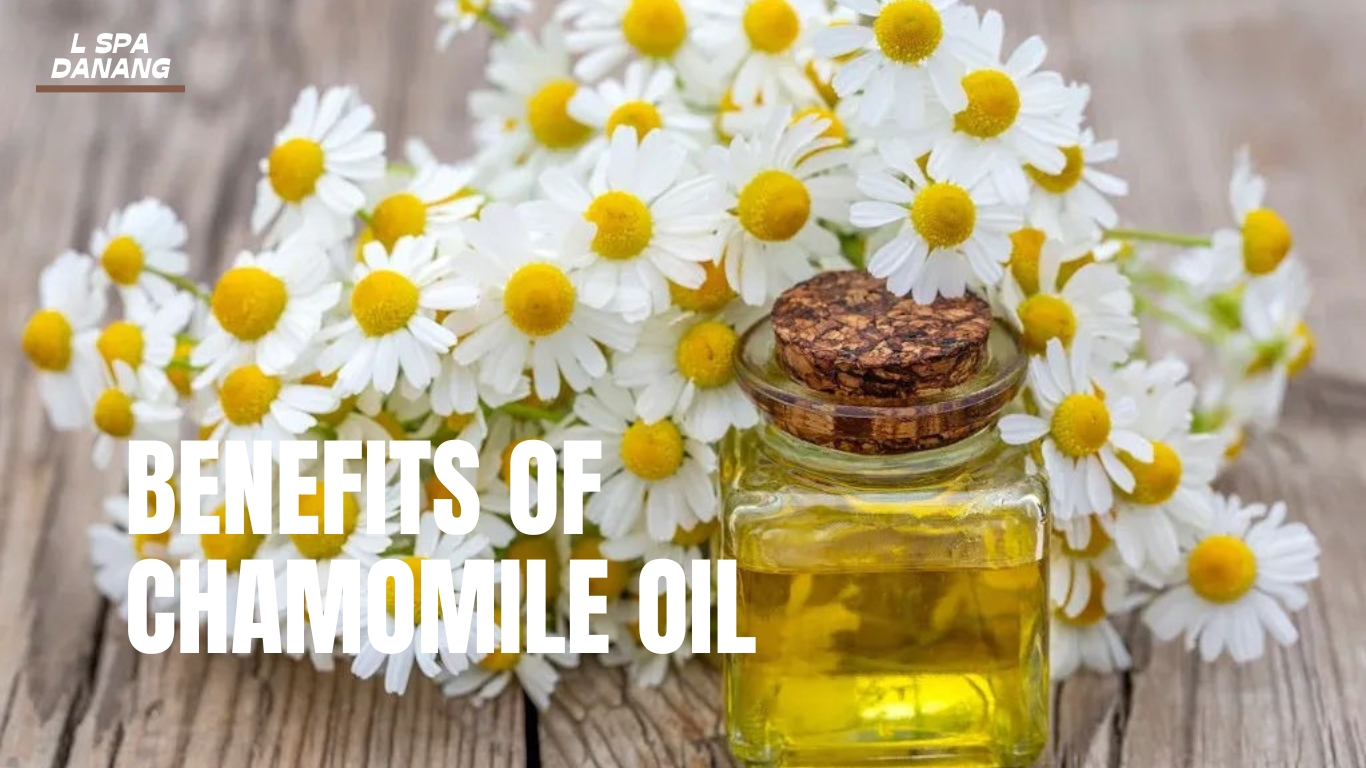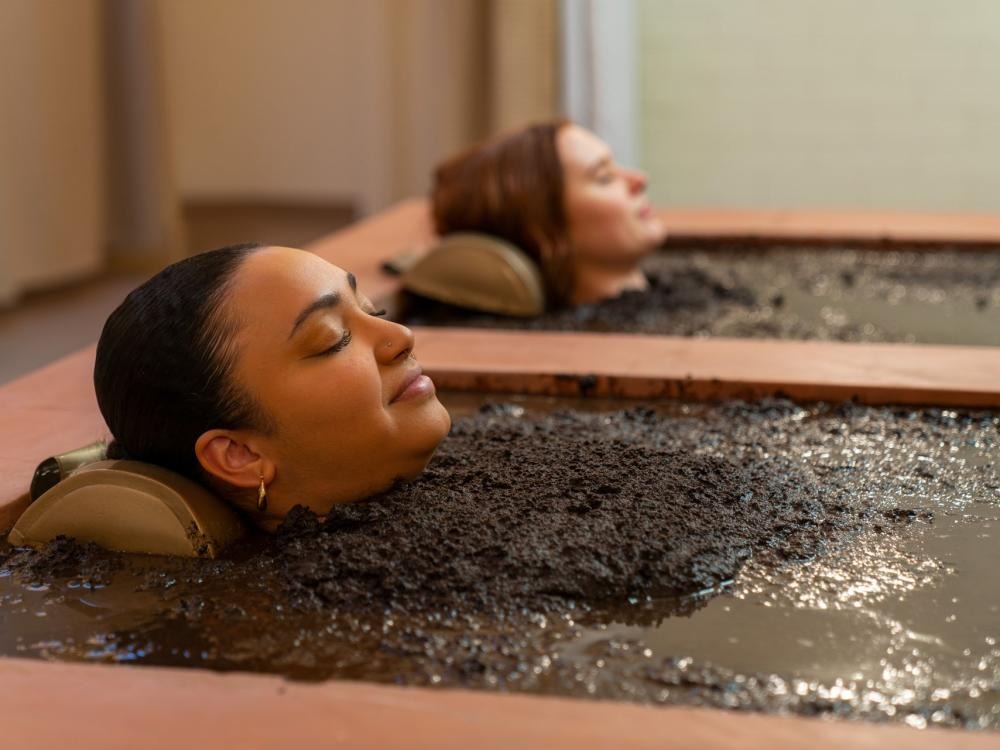Chamomile oil, with its rich historical significance and versatile applications, has long been revered for its myriad benefits. From ancient civilizations like the Egyptians and Romans to its continued use in modern times, chamomile oil remains a fascinating subject of exploration. In this discussion, we will delve into the extensive range of benefits of chamomile oil, tracing its historical roots and examining its diverse applications in various aspects of well-being.

What Is The Difference Between Roman And German Chamomile?
Chamomile oil, derived from the chamomile plant, shares a botanical relationship with daisies, specifically sourced from the plant’s flowers.
Two distinct varieties of chamomile are commonly encountered:
- Roman chamomile (Chamaemelum nobile or Anthemis nobilis)
- German chamomile (Matricaria recutita or Chamomilla recutita)
These two plants exhibit slight differences in appearance, and their active ingredient compositions vary slightly. Notably, chamazulene is the most researched active ingredient, with German chamomile containing higher levels.
What Are The Benefits Of Chamomile Oil?

Chamomile’s usage is documented in medical texts from ancient Egypt, Greece, and Rome. Throughout the centuries, it has been employed for:
- Addressing digestive upset, such as indigestion, nausea, or gas.
- Facilitating wound healing, including the treatment of ulcers and sores.
- Providing relief from anxiety.
- Alleviating skin conditions like eczema or rashes.
- Offering anti-inflammatory and pain relief for conditions such as back pain, neuralgia, or arthritis.
- Promoting sleep.
Recent research is shedding light on the health benefits of chamomile oil, elucidating why it has been a remedy for various ailments throughout history. Let’s delve into these benefits in more detail.
- Digestive upset
- Chamomile oil demonstrated a protective effect against diarrhea and the accumulation of fluid in the intestines.
- Patients who applied chamomile oil to their abdomen experienced a quicker return of appetite and a speedier resolution of gas compared to those who did not use chamomile oil.
- The oil exhibited muscle-relaxing properties, potentially contributing to its historical use in addressing digestive conditions such as indigestion and cramping.
- Wound healing: Chamomile ointment displayed notably superior wound healing and antibacterial activity when compared to both tetracycline ointment and a placebo.
- Generalized anxiety disorder (GAD): Patients undergoing chamomile therapy experienced a reduction in their anxiety symptoms, with the treatment contributing to decreased anxiety levels and elevated morning cortisol levels.
- Depression: A decrease in symptoms associated with depression was observed. It is crucial to highlight that while chamomile extract can be consumed orally, ingesting chamomile essential oil is not recommended.
- Skin irritation: Chamomile oil demonstrated relief for atopic dermatitis in mice when applied to their skin. The mice that received chamomile oil exhibited significantly lower markers associated with allergies compared to those that did not receive it.
- Pain relief: The use of chamomile essential oil resulted in a notable decrease in the requirement for pain relief medication.
- Sleep aid: Chamomile, renowned for its sleep-promoting qualities, is substantiated by research. When taken orally as an herb, there was a significant improvement in the sleep quality of those who consumed chamomile extracts compared to the group given a placebo.
- Anti-cancer properties:
- Researchers discovered that cancer cells were more prone to undergo cell death when treated with the chamomile extract.
- Additionally, the study revealed that chamomile extract treatment diminished the capacity of cancer cells to generate blood vessels, crucial for sustaining tumor viability.
- In another recent study, the examination of a component in chamomile oil, known as apigenin, demonstrated its ability to both inhibit growth and induce cell death in a human cancer cell line.
Are There Any Side Effects?
Essential oils are highly concentrated and should not be ingested without the supervision of a qualified professional, as some can be toxic. If you wish to use chamomile internally, opting for chamomile tea is a safer alternative. To prevent accidents, ensure that chamomile oil is stored out of reach of children or pets. It’s important to be aware of potential side effects and drug interactions associated with chamomile use.
Skin irritation: Certain individuals may experience skin irritation from essential oils. If you’re unsure about your sensitivity to the oil, perform a patch test by applying a small amount of diluted chamomile oil on the inside of your elbow before using it on other skin areas. If you observe any signs of redness, itching, burning, or swelling, discontinue use immediately.
Allergies:
Certain individuals may have allergies to chamomile oil, especially if they are allergic to plants closely related to chamomile, such as daisies, ragweed, or marigolds.
In rare instances, a severe allergic reaction known as anaphylaxis can occur, constituting a medical emergency. Be vigilant for signs such as:
- Difficulty breathing
- Swelling of the throat
- Coughing or wheezing
- Tightness in the chest
- Rash
- Vomiting
- Diarrhea
Drug interactions: Chamomile has the potential to interact with drugs such as cyclosporine and warfarin. If you are currently on prescription medications, it is advisable to consult with your doctor before incorporating chamomile oil into your routine.
Use while pregnant or breastfeeding: If you are pregnant or breastfeeding and considering the use of chamomile oil, it is essential to consult with your doctor first to determine its safety for you.
How To Use Chamomile Oil?

Various techniques are available for usage, such as diffusing or applying it topically.
Aromatherapy Applications
Applications in Aromatherapy Inhaling chamomile oil can be beneficial for various conditions such as anxiety and sleep promotion. You can incorporate the oil into your routine through a diffuser or a glass spray bottle.
- Diffusion: A diffuser disperses the scent of evaporated essential oils throughout a room. When diffusing chamomile oil, ensure to adhere to the specific instructions provided with your diffuser.
- Spray: For a spray application, dilute 10 to 15 drops of chamomile oil in each ounce of water. Place the mixture in a glass spray bottle, shake well before use, and avoid using a plastic spray bottle, as the oil may break down the plastic over time.
When utilizing chamomile or any essential oil for aromatherapy, ensure proper ventilation in the space. Exercise caution to prevent exposure to pregnant or breastfeeding women, children, and pets.
Topical Applications
Topical Applications Chamomile oil is suitable for topical use and may aid in alleviating aches, pains, digestive issues, or anxiety. Before applying any essential oil to the skin, it must be diluted with a carrier oil. Here are various ways to incorporate it:
- Massage Oil: Dilute chamomile oil in a carrier oil, such as coconut oil or jojoba oil, to create a massage oil.
- Bath Oil: Combine chamomile oil with a carrier oil and add it to your warm bath water.
- In a Lotion: Add 1 or 2 drops of chamomile oil to your body lotion or moisturizer, then apply it to your skin.
- On a Compress: Create a hot compress by soaking a towel or cloth in warm water, adding 1 to 2 drops of diluted chamomile oil, and applying it to areas experiencing discomfort, such as your back or stomach.
What To Look For In Chamomile Oil?
Follow the guidelines below when shopping for chamomile oil or other essential oils:
- Be skeptical of oils that assert they can treat or cure specific conditions.
- Verify the Latin name of the plant on the product label to ensure you’re getting the type of chamomile oil you desire.
- Check for purity statements; you should be receiving 100 percent essential oil. If the product is mixed with something else, the label should indicate it.
- Before purchasing, smell the product. If it doesn’t have the characteristic scent of chamomile oil, refrain from buying it.
- Opt for products in dark-colored bottles. Essential oils can be damaged by light, so choose bottles that protect against light exposure.
FAQs
What is chamomile oil indicated for?
Historically, Roman chamomile has been employed to address issues like nausea, vomiting, heartburn, and gas. In contemporary usage, it is often utilized to alleviate anxiety. When applied to the skin, it may help reduce inflammation caused by cuts or hemorrhoids. Additionally, chamomile oil is occasionally used to alleviate discomfort associated with conditions such as eczema and gingivitis (swollen gums).
Why is chamomile oil so expensive?
The expense of this essential oil is a reflection of the intricate characteristics of the chamomile plant, considering factors such as its specific growth conditions, the ease or difficulty of cultivation and harvesting, and the volume of essential oil that can be extracted from the plant.
Can I use chamomile oil on my face?
Soothing: With potent anti-inflammatory and calming attributes, Chamomile Essential Oil serves as a remarkable ingredient for comforting your complexion. Whether dealing with irritation, breakouts, or other skin issues, Chamomile Oil proves to be a beneficial natural remedy to pacify your skin and restore its radiant appearance.
This article is for informative reference and to explore the Benefits of Chamomile Oil. To learn about our available treatments and services, please visit the L Spa Da Nang website.





